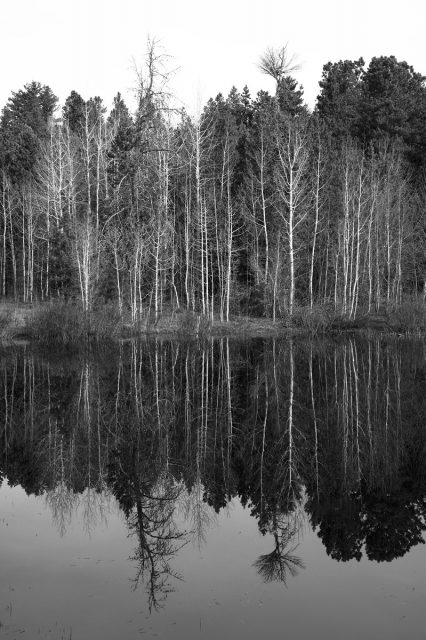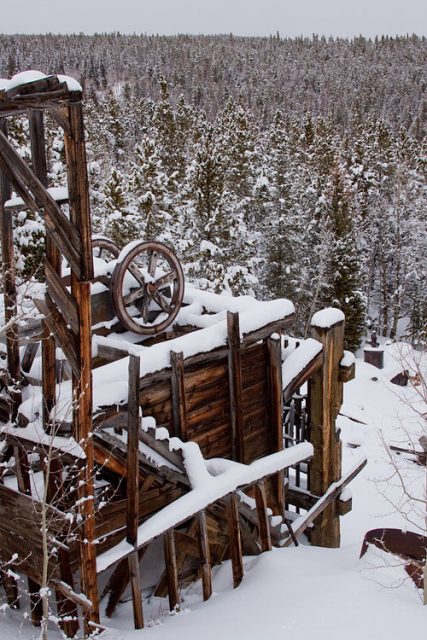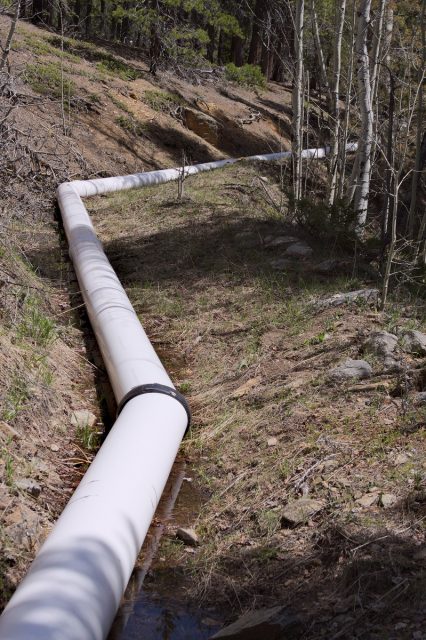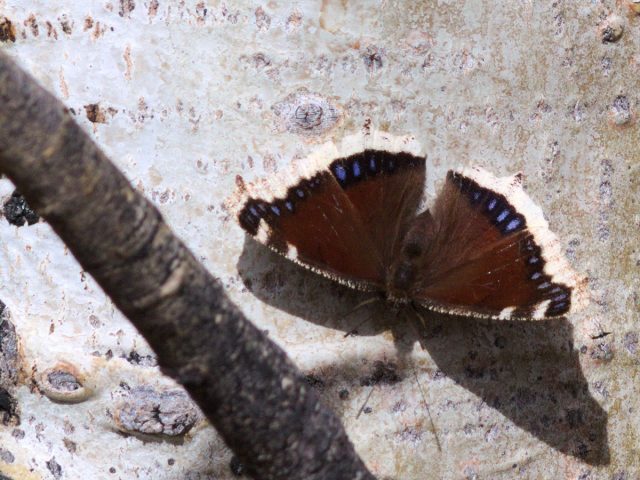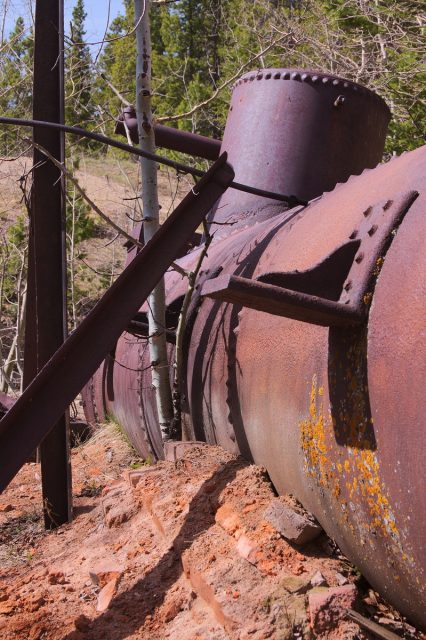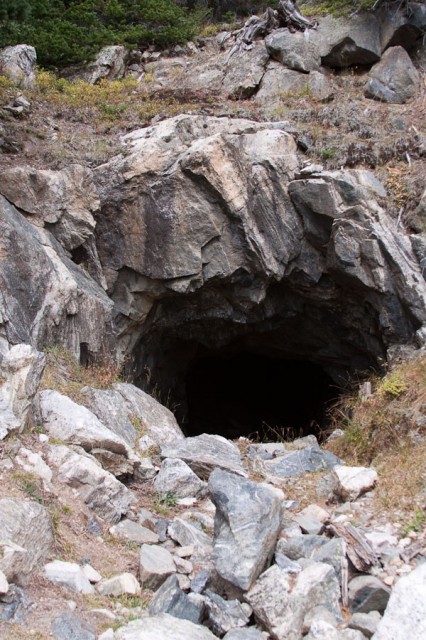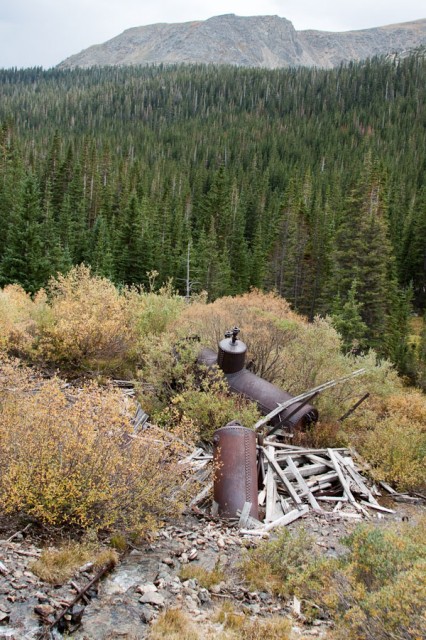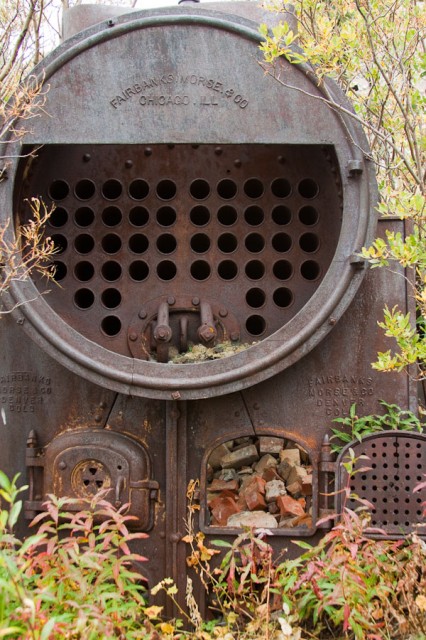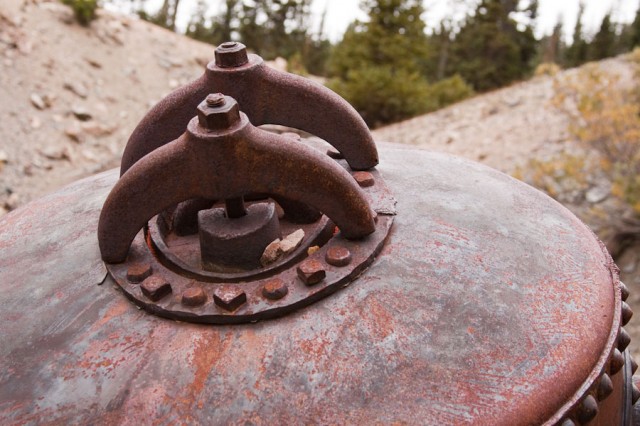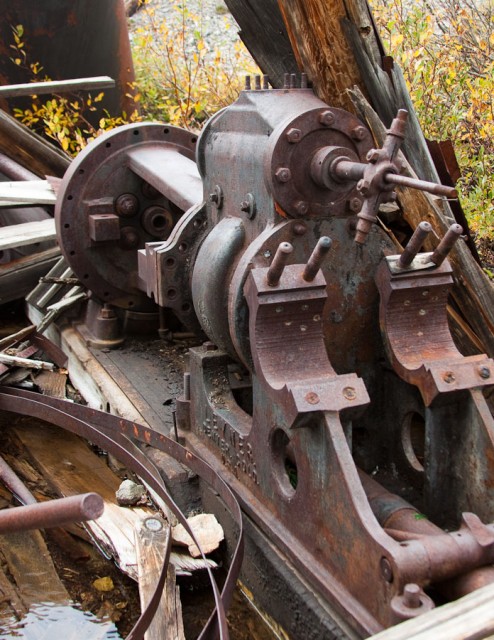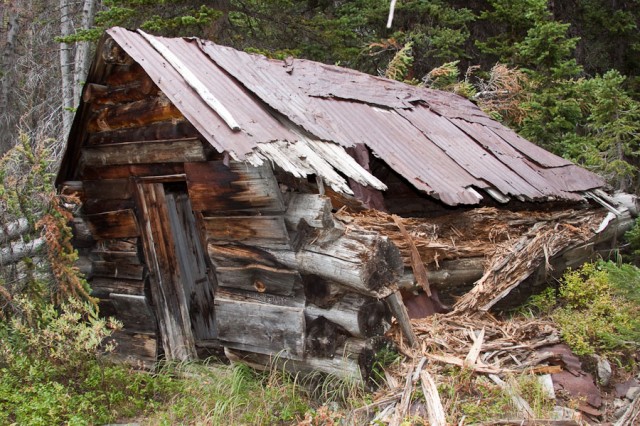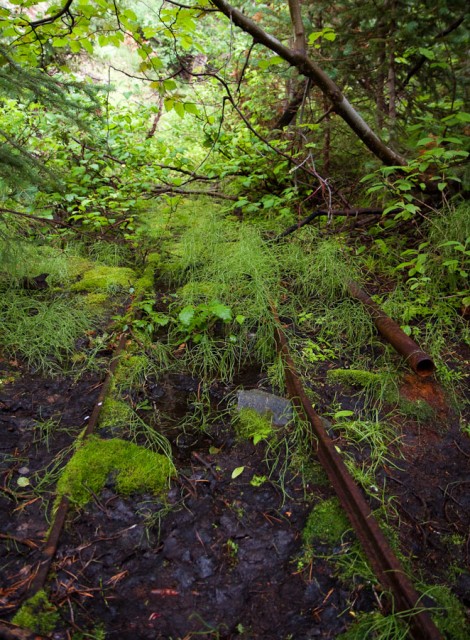Sometimes I just want things to be static and unchanging. During this crazy time of wearing masks, waiting in line to enter the grocery store and being more anti-social than usual, I find it comforting to get out into nature and visit the unchanging landscapes. Well, I should state that the landscapes are always changing, but in small, natural ways.
I went out this week and hiked the Odyssey trail (my own name for it since it doesn’t have an official name). I was expecting small changes. I was curious how the Champion stamp mill ruins survived another winter. Big change. The huge jaw crusher had fallen through the wooden supports holding it up. It was not unexpected. It was just a matter of when.

The pulley of the jaw crusher is still partially visible in the center after falling through the supporting deck.
Then another change: someone with too much time on their hands moved the old school bus from where it had sat for decades near a mining camp, to a quarter mile away. I can’t fathom why this was done. The new site is not very interesting. Well I suppose it’s better than being pushed into the creek which was a lot closer.

The old school bus in its new location (actually it says Colorado State Forest Service on the side, so not school)
The next change was the aqueduct is no longer an aqueduct.
The most disappointing change was a fir tree which was hundreds of years old succumbed to the winds of winter. It was the oldest fir tree that I have seen in the wild.
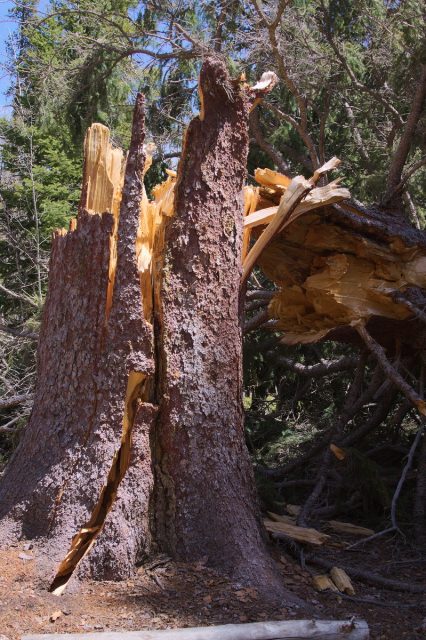
This old fir tree was hundreds of years old. The diameter where the tree broke was 3.5 feet. It’s nearly 6 feet in diameter near the ground.
By the end of the hike I was feeling pretty unsettled with how much things had changed in a year. So much for those unchanging familiar landscapes.
It seemed like a longer than usual winter. So much snow. So much work. So much bullshit. I had looked forward to camping in the Utah deserts, in the silence, the solitude, in the warmth. But a world pandemic got in the way of it, with lockdowns and a piling on of the work schedule. I’m grateful to be able to earn a living, many are not so lucky. The pandemic will likely affect business eventually since what I do is connected to disposable income. I imagine that some customers will no longer have disposable income.
I’m hoping to update more often, but who knows. I’m trying to get my photographic “work flow” established on the Linux desktop since I no longer use Windows. I’ll be more likely to update if it’s easy to do so, and developing the photos has been a block in the recent past. I estimate I’ve taken somewhere around 40,000 photos in the last 20 years. For Linux, I seem to be settling on Rapid Photo Downloader to get the photos into folders and RawTherapee to process the raw images.

